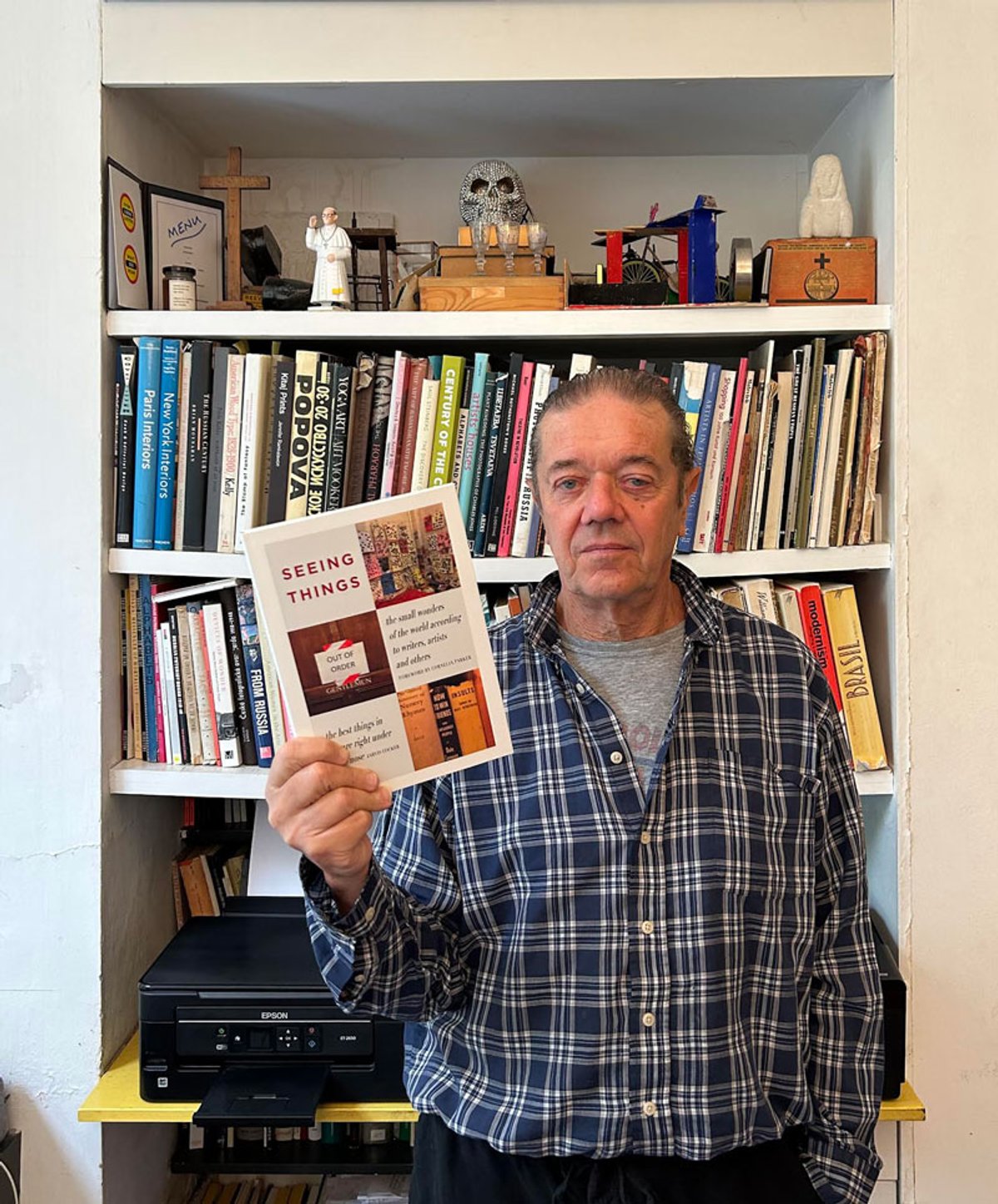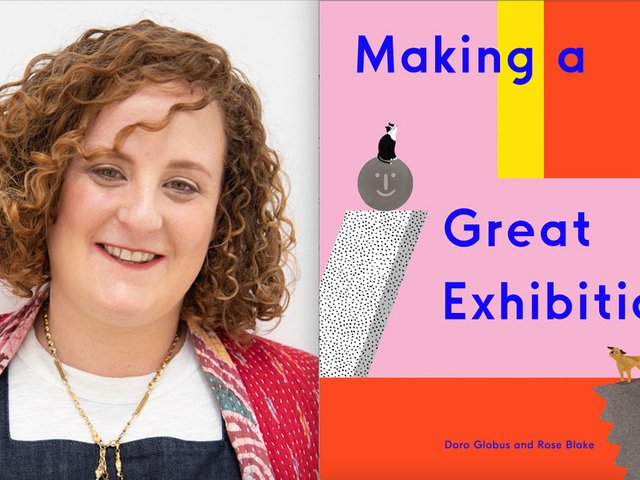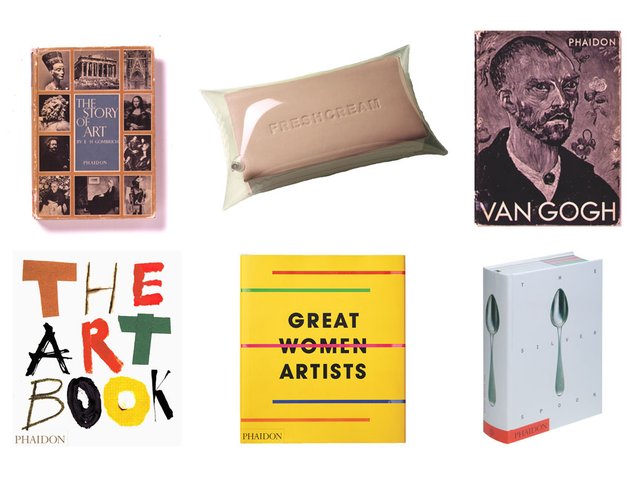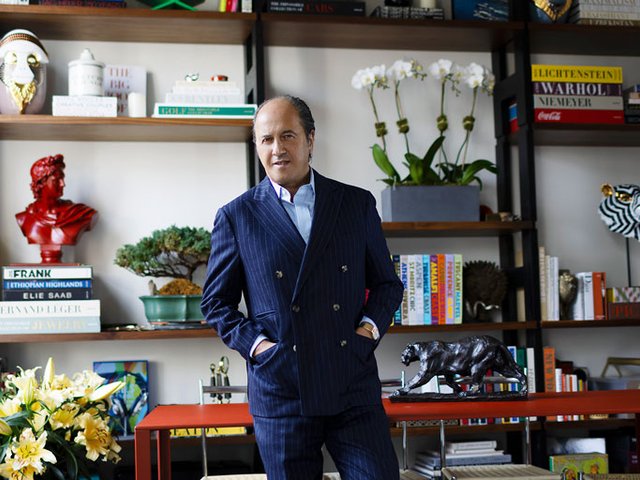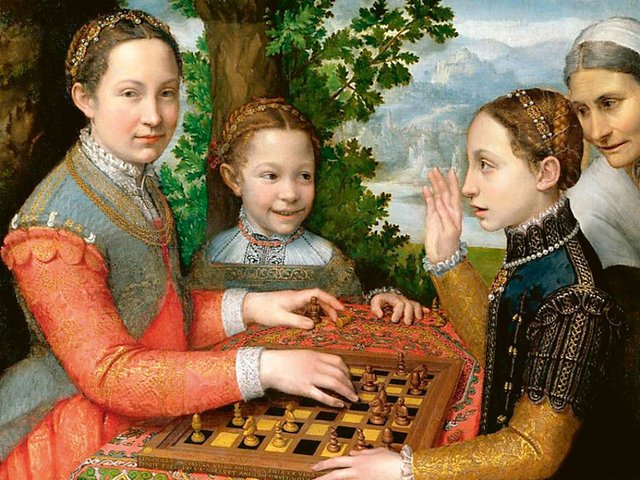To the casual observer, art publishing is dominated by a few industry titans—but smaller publishers have quietly made their mark over the past decades. Redstone Press, founded in 1986 by the designer and editor Julian Rothenstein, has published more than 70 books. Rothenstein oversees the production and distribution of all the books himself from the basement of his London home.
Over the years, Rothenstein has worked on Redstone publishing projects with the late art critic Mel Gooding and also collaborated with the artist David Shrigley on a number of publications.The latest Redstone publication is typically quirky and entertaining. Seeing Things: the small wonders of the world according to writers, artists and others, published next month, brings together images from the Instagram feeds of established artists and other cultural figures including Cornelia Parker, Peter Doig, Marc Quinn and Rachel Whiteread. We spoke to Rothenstein about how the company has evolved and what makes his approach unique.
The Art Newspaper: Why did you start Redstone Press?
Julian Rothenstein: Redstone started in 1987 when I found out that [the 20th-century Flemish artist] Frans Masereel’s novels-told-in-woodcuts—little masterpieces—had never been published in England. It was an opportunity too good to miss. The Guardian gave the two novels, The Idea and Story Without Words, published together, a half-page review and it went on to sell thousands of copies.
Your company ethos is “small is beautiful”?
Yes! There have been times when it was tempting to be under the umbrella of a much larger publisher but losing control and having to produce a fixed number of books a year to make it worthwhile for them, was never an appealing option.
In the age of the blockbuster exhibition and book, is it a challenge to remain distinctive and compact?
Everything about book publishing is challenging but as the larger publishers gobble each other up there is much more room to breathe for the independents, many of whom are extraordinarily successful.
The layouts and style of Redstone Press are instantly recognisable—do you always use the same templates?
I worked as a designer for many years and later edited A2Z and More Signs (Thames & Hudson) which was published in several different versions. My interest in typography has now burnt out so I have been using only a couple of fonts in conjunction with an unexpected image.
Tell us about some of your staples, such as the Redstone Diary. Why have they built up such a following?
People clearly get used to a format for a diary and want the same product year after year. The theme of the Redstone Diary doesn’t seem to make much difference and the guiding principle, which is that every image or text should be unexpected, has always remained the same. The diary format is uniquely liberating compared with other kinds of publication and I’m never troubled if the user is baffled by why a particular image or text is included—I just enjoy the freedoms I have which are not given to many. Since my long-term collaborator, the art critic Mel Gooding died, I have persuaded Julian Barnes to write the introduction and find texts for the 2024 version; in 2025 my co-editor is Marina Warner.
What is Seeing Things about? Where did the idea come from?
As a small press working with minuscule budgets, the cost of using images from museums, picture libraries etc. are prohibitive, so I’m always looking for other sources. Discovering Instagram and learning how to process pictures so that they can be reproduced properly was a revelation. Trawling through Instagram was extremely laborious as it is mostly very boring but people like David Byrne, Cornelia Parker, Jarvis Cocker and some others are posting really interesting and surprising images and it occurred to me I could make a book of them. Getting the images, on double-page spreads, to speak to each other was the key to making the selection vaguely coherent and the results are often very funny or strange.
• Julian Rothenstein (ed), Seeing Things: the small wonders of the world according to writers, artists and others, Redstone Press, 144pp, £19.95 (pb)


